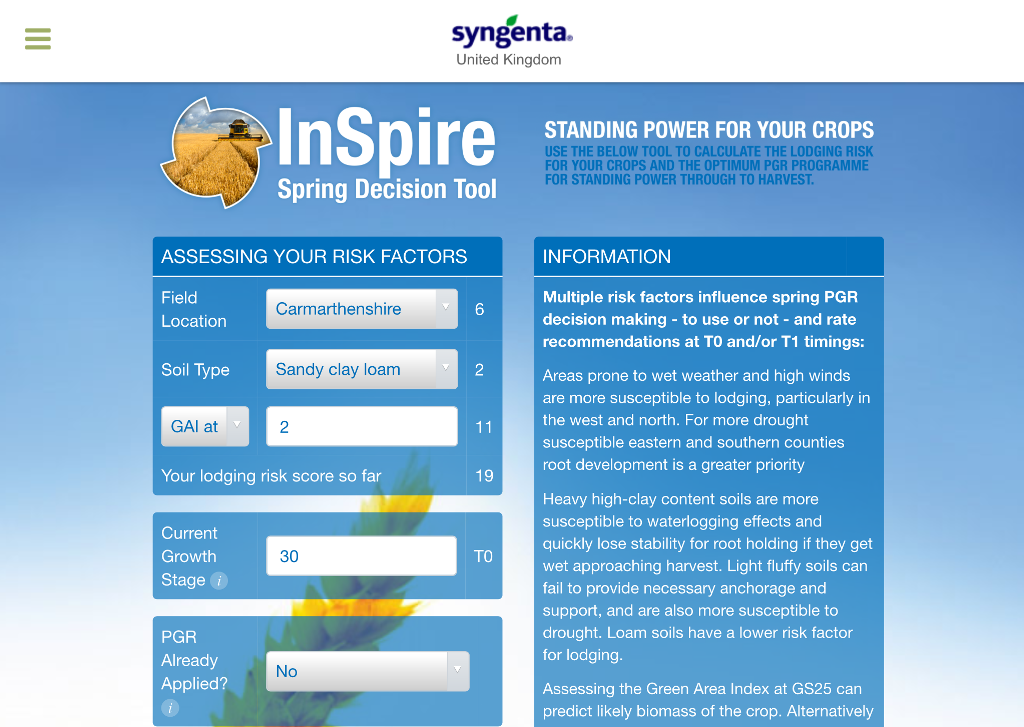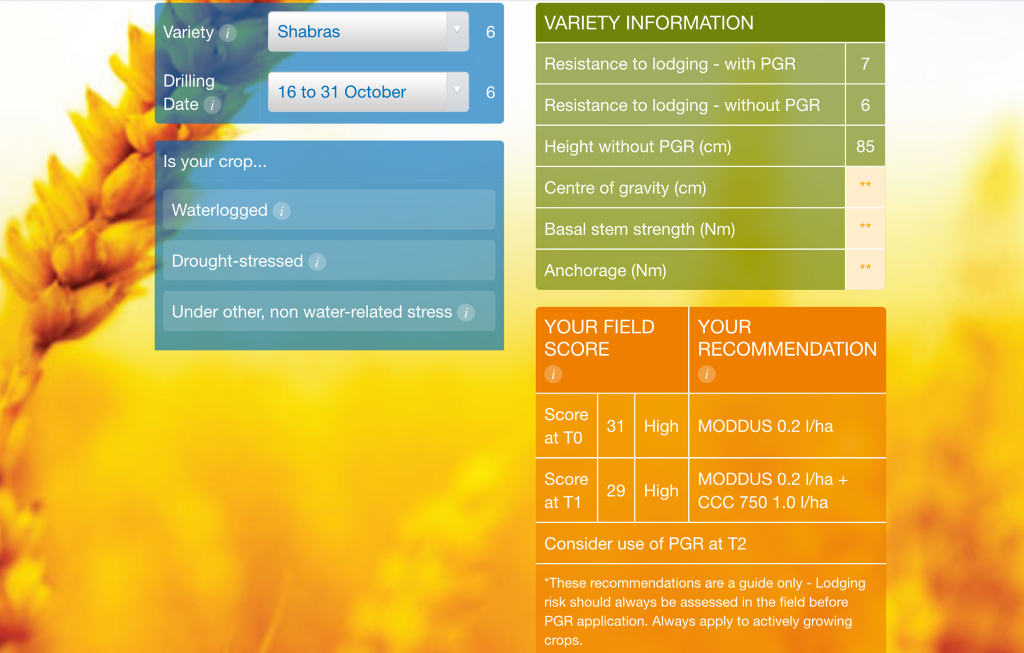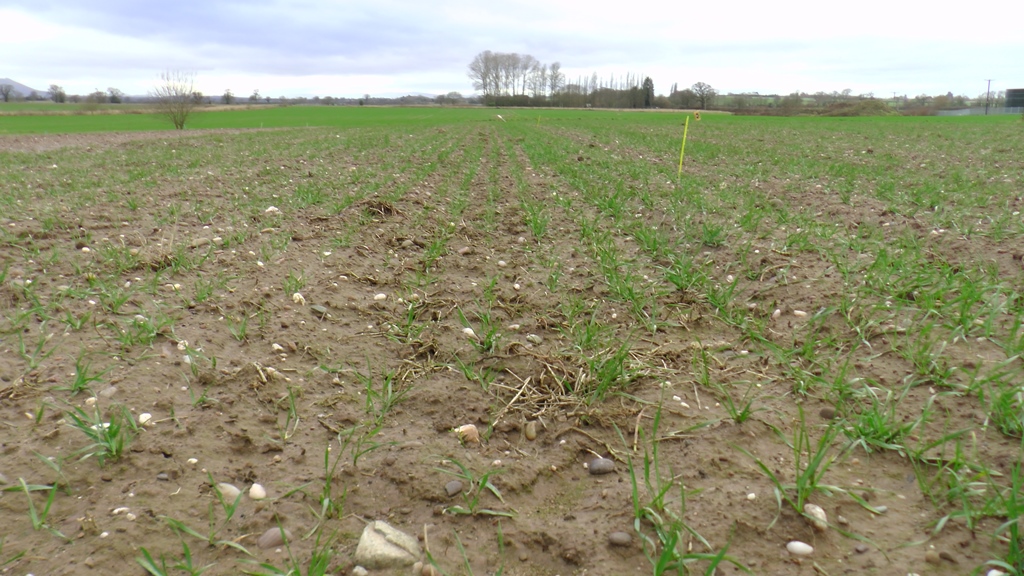A new on-line tool has been developed, using research conducted at Harper Adams University, to give growers a more refined picture on PGR choices.
By Lucy de la Pasture
Work carried out on lodging in cereals, by Dr Mitch Crook at Harper Adams University, has formed the basis of a new tool developed by Syngenta.
InSpire provides tailored variety guidance, explains the company’s PGR campaign manager, Mel Wardle.
“InSpire utilises this important new database for lodging risk, which factors-in the physical in-field influences,” she says.

The tool gives information on risk factors
“Each variety’s characteristics will make it more or less susceptible to stem and/or root lodging. InSpire provides an on-line risk assessment of these and the many other interrelating factors that influence crop lodging.
“There’s a vast number of factors to consider when making PGR recommendations, including sowing date, soil type, establishment and crop growth to date,” explains Mel.
All of this data can be inputted into the InSpire tool which then takes them into account, along with environmental factors such as average rainfall and windiness, which will also affect lodging risk.
The tool assesses whether a crop will benefit from a PGR application and then produces a guideline strategy. This includes how those applications should be spilt to best effect for a specific variety and its growing situation.

InSpire provides tailored variety guidance.
According to Syngenta field technical manager James Southgate, there’ll be instances where crops are growing in good soil structures, and their PGR requirement may be limited.
“InSpire has been validated to only give best-use recommendations, as and where risk factors indicate PGR treatments are justified to give yield returns or harvesting security.”
InSpire also looks at crop growth stages and application timing, assesses variety lodging risk and directs PGR to the appropriate timing.
The tool produces a whole range of suggested recommendations; from a straight chlormequat application for the lowest risk varieties, to Moddus (trinexapac-ethyl) between 0.1-0.2 l/ha, with or without chlormequat depending on the calculated lodging risk.
Crops under stress
Another useful output from InSpire will be advice on PGR application when the crop is under stress, as many were during last spring when under dry conditions.
“Making Moddus applications earlier in the spring will help to set crops up to better withstand stresses of weather influences later in the season and protect yield potential. This is where using InSpire will help indicate where PGRs can have the best potential results,” explains James.
Where there are other stress factors, such as BYDV and nutrient disorders, InSpire will highlight that the crop is likely to be regulating itself and no PGR should be applied while the crop is under these stresses.

The recommendations calculated by InSpire will be put into practice in trials on Syngenta Innovation Centres.
In contrast, where soils are waterlogged, root growth is likely to have been limited by the anaerobic conditions and the tool will suggest these crops will benefit from a PGR to promote root growth as soon as the soils are dry enough to travel.
The recommendations calculated by InSpire will be put into practice in trials on Syngenta Innovation Centres over the coming season and further trials are being carried out by Mitch at Harper Adams to improve the database.
“The results from different seasons will help refine the database,” says James. “There needs to be an interpretation of the InSpire guidance to make allowances for crop nutrition information, like soil mineral nitrogen, organic manures and applied nitrogen rates, before reaching a final recommendation.”
The InSpire decision support tool can be found at www.syngenta.co.uk/pgr-decision-tool




